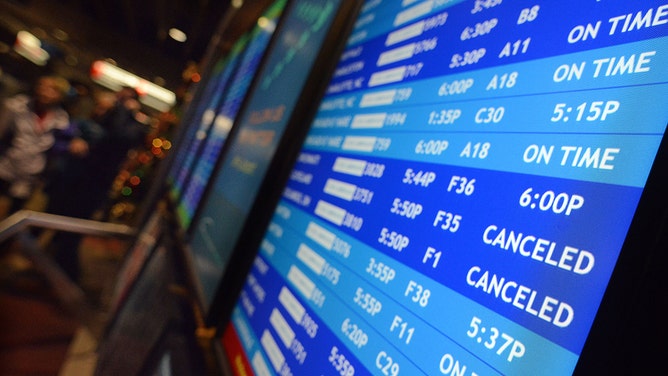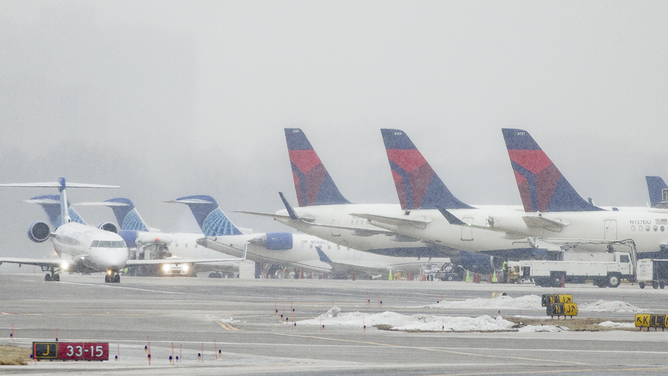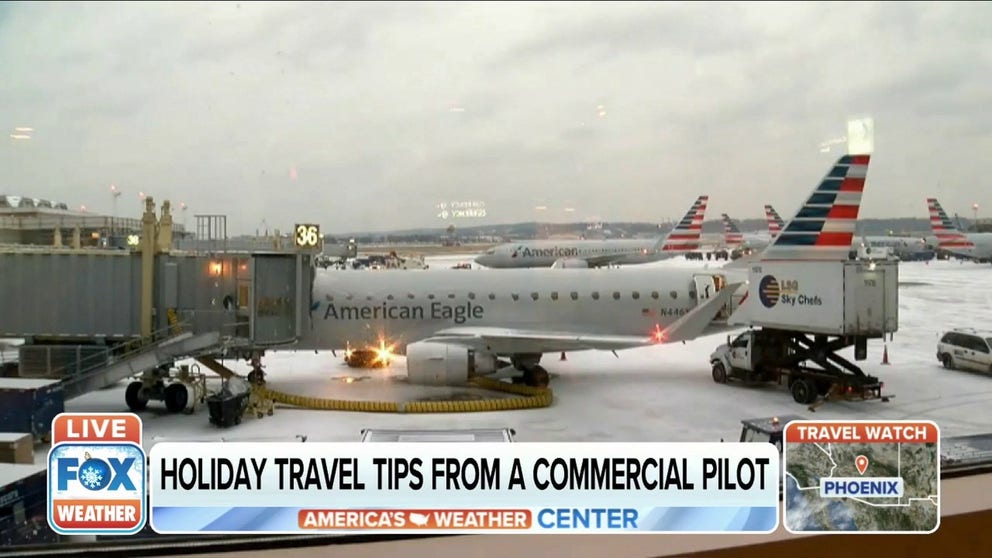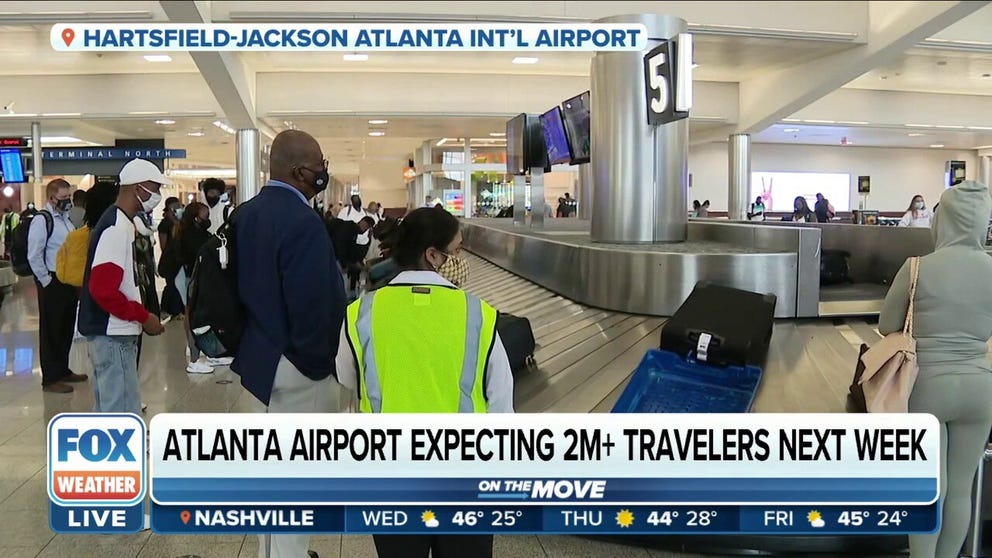Here are the best travel tips from an airline pilot
Find out how to make your bag stand out, which seats are best for people prone to nausea and other helpful tips to make your travel experience as smooth as possible.
Holiday travel tips from a commercial pilot
Kathleen Bangs, a commercial pilot, shares some holiday travel tips.
The holidays are a time for friends, family…and travel headaches.
To make your travels easier during the holidays and any time of year, here are some tips from an insider – former commercial airline pilot and aerospace expert Kathleen Bangs from FlightAware:
Planning your flight

Flight departure displays indicate delayed or canceled fights at Philadelphia International Airport November 26, 2014 in Philadelphia, Pennsylvania.
(William Thomas Cain / Getty Images)
- Take an early flight and fly nonstop - Early flights have the least chance of a cancelation, Bangs said. Also, fly nonstop, if possible. It may cost more, but according to Bangs, the higher fares are worth the convenience and peace of mind the nonstop flights offer. For example, flying nonstop keeps you from potentially being trapped at a connecting flight.
- Choose your seat wisely - If you’re prone to nausea, Bangs recommends picking a seat either over the wing or close to the cockpit as these areas are the most stable parts of the plane. People prone to nausea should avoid seats in the back of the plane, as that section swings around the most.
- Self-serve as much as possible - Use airline apps to stay informed of any alerts and to make any necessary changes to your flight, Bangs said. She also highly recommends using FlightAware to learn of any cancelations or delays and checking the Department of Transportation’s airline consumer dashboard to learn about airlines’ policies regarding refund policies.
- Know the weather - At least three days before your flight, Bangs recommends checking the weather not just at your destination, but also across the country. Weather events can have a ripple effect on your airline regionally or nationwide, leading to delays and cancelations. Check the FOX Weather app for the latest forecast and more.
HOW TO WATCH FOX WEATHER ON TV
Packing for your flight

FILE - An airport worker is seen loading luggage.
(Pedro Portal/El Nuevo Herald/Tribune News Service / Getty Images)
- Take the largest carry-on possible - Bangs uses two roller bags as carry-ons – one is the largest size permitted on the plane and goes in the overhead compartment, and the other bag fits under her seat. She recommends bringing important items, such as computers, chargers and jewelry, in those carry-ons.
- Include identification in your checked bag - About one percent of all bags get lost during flights. So in her checked bag, Bangs includes a piece of paper that has her name, email address and phone number on it. Should the bag tag be torn off, the information on that piece of paper can help return the bag to its owner.
- Make your luggage stand out - Ordinary-looking luggage, such as black bags, can make identifying a lost bag in a mountain of bags challenging. Bangs recommends using luggage that stands out or, if you have a black bag, put some bright stickers on it.
THUNDERSTORMS HUNDREDS OF MILES AWAY CAN WREAK HAVOC ON AIR TRAVEL
Ensuring a good flight experience

(Samuel Corum/Bloomberg via Getty Images)
- Bring a mask with you - Bangs recommends wearing a mask on your flight or bringing a mask along just in case, as viruses can circulate in the air. She also noted how passengers may become sick and vomit during a flight, so having a mask handy can help provide some protection.
- Charge your phone at the gate - While waiting for your flight, take that time to charge up your devices. Bangs said that outlets and USB ports on planes sometimes don’t work, and when they do, accessing them may be tricky given the tight spaces in the cabin and around the seats.
- Wear layers - Wearing layers of clothes can provide comfort and flexibility as the temperatures change. Bangs noted how during the colder season, the temperature on planes can be very warm. Dressing in layers will allow you to stay cool, while having layers to keep you warm when you exit the plane.
THOSE AIR TRAVEL HACKS YOU'VE LEARNED DON'T WORK ANYMORE BUT HERE ARE A FEW TRICKS YOU CAN TRY
Being safe on the flight
Atlanta airport expects pre-pandemic travel numbers Thanksgiving week
Hartsfield-Jackson Atlanta International Airport predicts more than 2.5 million travelers will move through the airport this November holiday week. Airport leaders share with FOX Weather’s Mitti Hicks plans to combat inclement weather.
- Bring your own medical kit - Bangs said she always brings a medical kit. Her kit is the size of a makeup case, and she keeps it in her carry-on, containing anything she might need on her trip, such as prescriptions, aspirin, antibiotics and a thermometer.
- Count the seat backs to your nearest exit - Safety briefings always note the exits on the plane in case of an emergency. Bangs recommends counting the number of seat backs to the exit closest to you – as the aisle may become congested with passengers, the only other option to leave the plane will be to climb or "swim" over the seats you counted to the exit.

